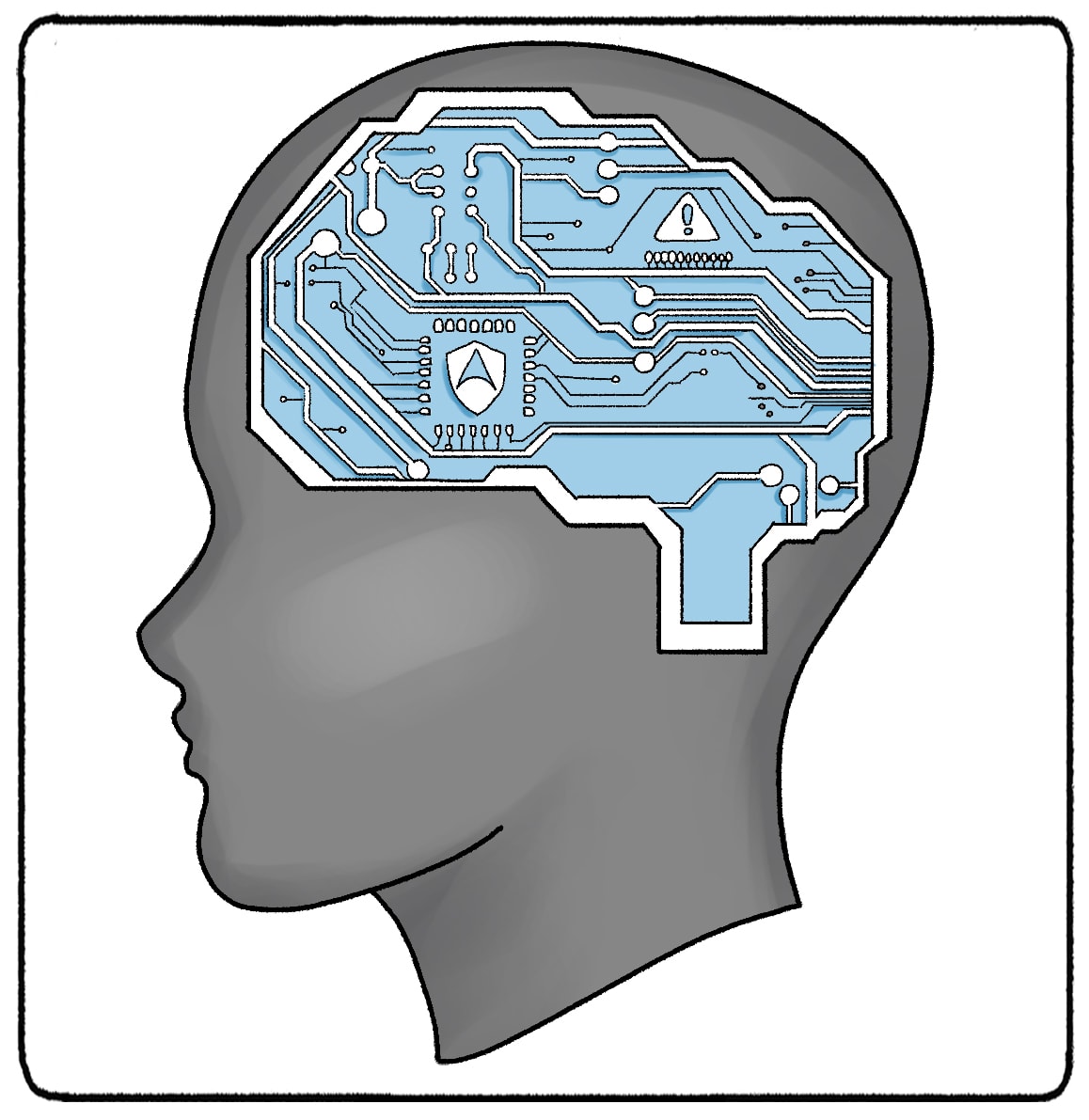Do your actions align with the person that you want to be?
In an ideal world, the answer would be “yes.” When you act like the person that you want to be, you are likely to live at peace. You have no conflicts and don’t toss and turn at night over what you have done in the past. But we all know that our behaviors aren’t so simple. The decisions we make may feel wrong, but we do them anyway to satisfy an itch, get caught up in the moment, or just because we feel the urge to act out. Psychologists like Freud blame this on the ego.
What Is “The Ego?”

In order to understand ego syntonic and ego dystonic behaviors, you just understand what the “ego” is. All terms were coined by Sigmund Freud, the father of psychoanalysis, part of the psychodynamic approach. Freud believed that all humans possessed an ego that negotiated between the id (our primitive nature) and the superego (the moral conscience.) Think of the angel and the devil on your shoulder. The devil is telling you to rob a bank so you have more power. The angel is telling you not to do that. The ego negotiates, finding more ethical ways to gain power and satisfy all parts of your personality.
What Is Ego Syntonic?
Ego syntonic and ego dystonic behaviors are determined by the ego’s desires and someone’s ideal self. The ego helps us become our ideal self. Our ideal self satisfies the urges of the id, while staying in line with the ideals set by society and the superego. "Ego syntonic” refers to behaviors, values, and ideas that are aligned with the ideal self and current self-image.
Examples of Ego Syntonic Behaviors
Discussing ego syntonic behaviors can be boring, but they don't have to be. Let's say John believes he is a good, humble person. His ideal self provides for his young family. Yes, John's id controls his desire to go out and cheat, but his superego directs that drive more appropriately. He pays attention to his wife's needs. In moments of frustration, he goes to the gym. Even though John's id tempts him to take the wallet he found on the ground, he returns it to the police. He is good, humble, and still living the life he set out to live. All of the above behaviors are ego syntonic.
Pretty standard, right? If you believe that you are a hard-working person, getting up every day and working at your 9-5 is an ego syntonic routine. If you believe that you are an honest person, telling the truth when you made a mistake is ego syntonic.
Just because a behavior is “ego syntonic” does not mean that it is an ethical, healthy, or positive behavior. Let's say Mary's ideal self is extremely wealthy. The id tempts her to do whatever it takes to be rich. Steal, marry a man for his money, commit fraud, etc. She's not going to rob a bank, thanks to her superego. But she justifies certain questionable or manipulative behaviors because they support her ideal self. That manipulation is technically ego syntonic.
What Is Ego Dystonic?
Conversely, “ego dystonic” refers to behaviors, values, and ideas that aren't aligned with the ideal self. If you believe that you are a hard-working person, spending an entire week sitting around watching TV is an ego dystonic behavior. If you believe that you are an honest person, lying is ego dystonic.
This classification is important for therapists to understand for two reasons. The first is that ego dystonic behaviors, thoughts, or values can be extremely distressing to a person. If you believe that you are a hard-working person, but reflect on a week of sitting on the couch doing nothing, you probably aren’t going to feel so good. But there is another reason why this distinction is important. As you will learn, “ego dystonic” behaviors and values can be completely healthy, but due to mental conditions, stress, or society at large, these healthy behaviors become distressing to patients. When a therapist taps into whether a patient sees their behavior as in line, or opposing to, the ideal self, they can better understand how to treat the patient or approach their distress.
What happens when a disorder or a condition leads us to these behaviors? What happens when a disorder or condition leads us to believe our behaviors are in line with our ideal self, even though these behaviors are dangerous? These are questions that psychoanalysts and therapists have been trying to answer for decades.
Eating Disorders and Examples of Ego Syntonic Behaviors
The discussion of ego syntonic vs ego dystonic behaviors arises frequently when discussing eating disorders. For many people experiencing an eating disorder, their harmful behaviors do not appear harmful. Calorie counting, binging, and other behaviors appear to be in line with the person’s ideal self. Eating disorders are commonly viewed as “ego syntonic disorders” because a person may not believe that they are doing anything wrong.
What does this mean for a therapist treating the patient? They will not get anywhere by simply telling the patient that their behaviors are harmful. (After all, the patient has probably heard this “advice” from friends or family, to no avail.) The therapist must instead try to dig deeper and focus on the patient’s emotional state. Once the patient believes that their harmful behaviors are not in line with their ideal self, they will have an easier time avoiding these behaviors and engaging in more healthy eating.
Addiction and Examples of Ego Dystonic Behaviors

In order to prevent harmful or immoral behaviors, a therapist may have to address the root cause of the behaviors. Ego dystonic behaviors are rarely a standalone issue. They may be a part of a vicious cycle, like the cycle that happens when someone is experiencing addiction.
When someone is heavily addicted to a substance, that substance becomes a priority over the ideal self. A person may engage in behaviors that they would otherwise avoid so that they can get their “fix.” This could include stealing or lying so they can get money and afford more substances.
Knowing that the addict engaged in ego dystonic behaviors, they might feel more stress. They may feel bad about themselves, but are too wrapped up in their addiction to blame (or walk away from) the addicting substance. Instead, they go back to the substance, and the cycle continues.
Understanding this cycle can help not only therapists, but also medical professionals and legislators make decisions about how to address the addiction crisis that is hurting our communities.
Ego Dystonic Behaviors and Personality Disorders
Whereas an eating disorder is classified as an “ego syntonic disorder,” a disorder like OCD is commonly known as an “ego dystonic disorder.” People with OCD may be aware that turning the lights on and off 25 times is excessive. They may see their “rituals” as harmful or frustrating. But they continue to engage in the behavior because they are experiencing the disorder.
Once a patient understands that their thinking leading up to their rituals is irrational, a therapist can better treat the symptoms of OCD and help their patient live a more normal life. CBT, Mindfulness-Based Cognitive Therapy, and Cognitive Restructuring are all common treatments for OCD and other ego dystonic disorders.
But what if someone believes that their rituals are in line with their ideal self? They may not be diagnosed with OCD, even though they display similar behaviors and symptoms to a person with OCD. Obsessive-compulsive personality disorder, or OCPD, is a disorder in which the patient believes that their rituals are healthy and in line with themselves. Diagnosis and treatment must be approached differently, all because of the patient’s perception of their behaviors.
Ego Dystonic and Sexual Orientation
Society at large plays an important role in shaping what the “ideal self” looks like and how it behaves. Eating disorders, for example, are not wholly caused by society’s adoration of thin models - genetics, biology, and overall mental health play into a person’s risk for developing an eating disorder. But when society tells someone that they must behave in a certain way, people may believe that their behavior and actions are ego dystonic. This plays into the complicated and frustrating history of how sexual orientation fits into psychotherapy.
Currently, ego-dystonic sexual orientation is listed in the ICD-10 not under mental disorders, but “Psychological and behavioural disorders associated with sexual development and orientation.” Egodystonic sexual orientation is defined in the ICD-10 as: “The gender identity or sexual preference (heterosexual, homosexual, bisexual, or prepubertal) is not in doubt, but the individual wishes it were different because of associated psychological and behavioural disorders, and may seek treatment in order to change it.” They make a note that sexual orientation itself is not a disorder.
The ICD-10 is an international classification of disorders. In past editions of the ICD, homosexuality was listed as a mental disorder. It was also listed as such in the DSM. In 1987, ego dystonic sexual orientation was removed from the DSM. The American Psychiatric Association recognizes that people can feel distressed about their sexual orientation, but that societal bias may play a role in this distress. They say that “Future research is needed to enhance our clinical care of the LGBTQ population and their families, including understanding if reduced societal bias actually leads to improved mental health outcomes.”
Are These Ideas Relevant Today?
Psychoanalysis, the field in which “ego syntonic” and “ego dystonic” conditions were first listed, is not widely accepted. In the mid-20th century, it was all the rage. Now, psychologists can admit some of Freud's ideas were strange at best, and problematic at worst. Plus, Freud's ideas are hard to prove. He didn't conduct experiments or studies like psychologists do today. Instead, he relied on patient stories. Nowadays, that doesn't fly. We cannot put the unconscious to the test. How can we measure the ideal self? Recording ego dystonic vs ego syntonic behaviors would be very tricky. And since psychologists cannot access the id, superego, or ego, this information is largely irrelevant to studies as we know them today. Sorry, Freud!
Many therapists have moved on from the original ideas of Freud, although they acknowledge that Freud’s ideas influenced the way that we approach modern therapy today. The world of psychology is always evolving, and the ideas that we believe now may not hold water in 20, 30, or 50 years. And that's okay! You can still ponder on ego dystonic and ego syntonic behaviors. You can reflect on how your behaviors reflect your "ideal self." Are your behaviors not lining up with the person you want to be? It might be time to make a change!



